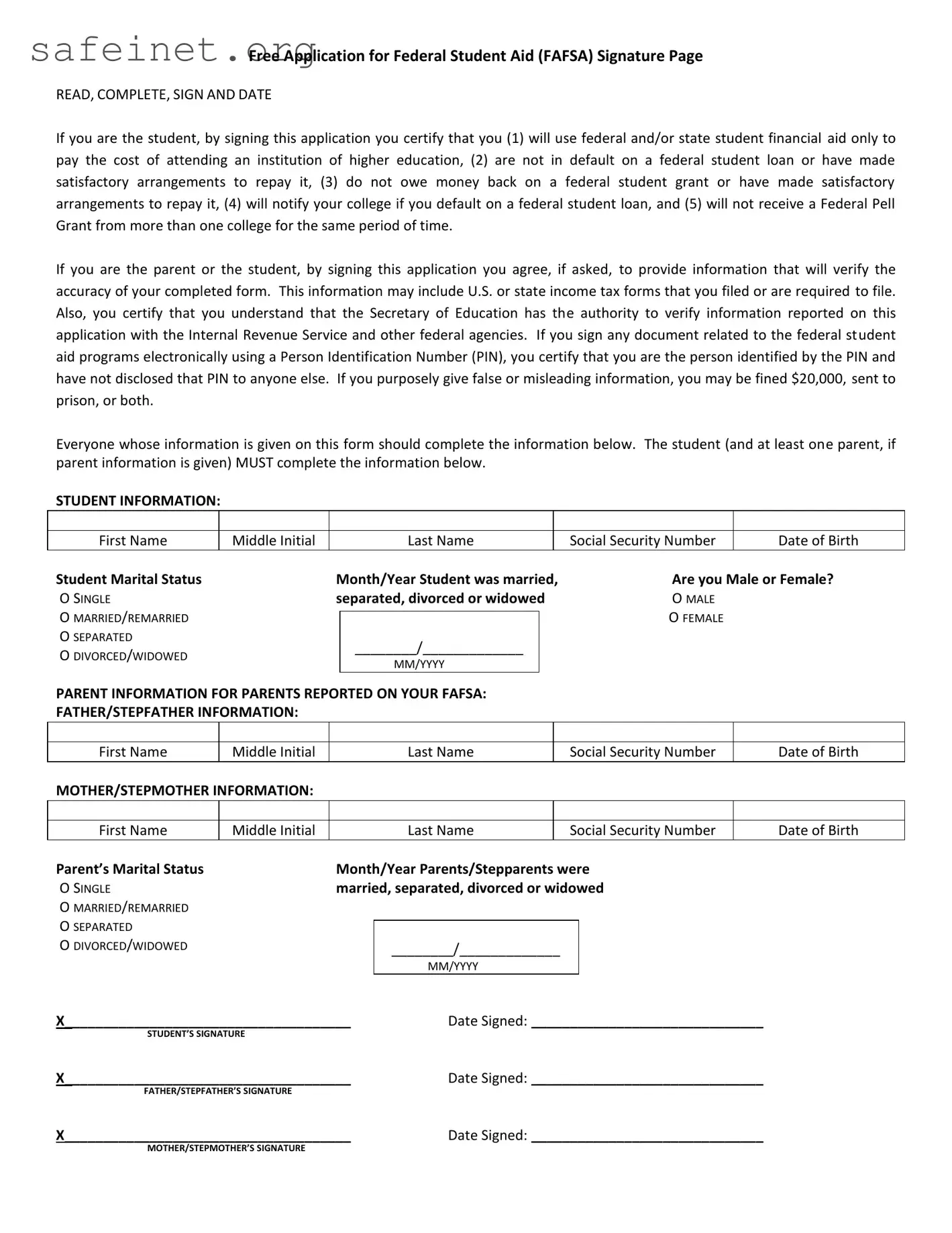What is the purpose of the FAFSA Signature Page?
The FAFSA Signature Page serves as a declaration and agreement that the information provided on the FAFSA form is accurate and truthful. By signing it, students and parents affirm their commitment to comply with various federal guidelines regarding financial aid use, loan repayment, and grant eligibility.
Who needs to sign the FAFSA Signature Page?
Both the student and at least one parent must sign this page if parent information is included in the FAFSA form. It is essential that these signatures are provided as part of the application process to ensure it is valid and complete.
What do I certify by signing the FAFSA Signature Page?
By signing the FAFSA Signature Page, you certify multiple statements. These include the intent to use the financial aid solely for educational expenses, the confirmation that you are not in default on any federal loans, and the acknowledgment that you must provide accurate information upon request for verification purposes.
Is an electronic signature acceptable on the FAFSA Signature Page?
Yes, an electronic signature is permissible. If you choose to sign electronically, you will be required to use a Personal Identification Number (PIN). This PIN identifies you as the signer, ensuring the security of your application.
What happens if I provide false information on the FAFSA Signature Page?
Providing false or misleading information can result in serious consequences, including fines of up to $20,000, imprisonment, or both. It is imperative to ensure all information submitted is accurate to avoid these legal repercussions.
What information is required on the FAFSA Signature Page?
The FAFSA Signature Page requires personal information from both the student and the parents, such as names, Social Security numbers, birth dates, and marital statuses. This information is necessary to establish identity and eligibility for federal student aid.
Can the FAFSA Signature Page be submitted separately from the main FAFSA form?
The FAFSA Signature Page should not be submitted separately. It is intended to accompany the main FAFSA form and cannot be considered valid on its own. Ensure it is included in your application submission for it to be processed properly.
What should I do if I realize I made a mistake after signing?
If you discover an error after signing the FAFSA Signature Page, you should promptly correct it by updating your FAFSA form online. It is crucial to ensure that all information provided is correct and up-to-date to avoid potential issues with financial aid eligibility.

